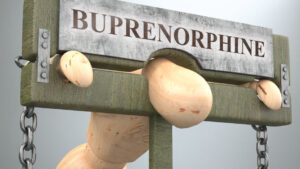Unity, not Uniformity

In a previous article, “Thoroughly Following the Path of Recovery,” I related the true story of a woman with five years of sobriety who responded to an amends letter written by the man who had killed her son in a hit-and-run accident. She said she could not describe the healing and gratitude his letter brought. She sobbed in her sponsor’s arms. “Thank you. I pray that you will keep on the path of sobriety and receive God’s love and forgiveness.” They were now in unity; they were brother and sister within the fellowship of Alcoholics Anonymous.
There are no qualifications for membership in A.A. other than the desire to stop drinking. You are a member of A.A. if you say you are. This is formalized in what is known as the Third Tradition: “The only requirement for A.A. membership is a desire to stop drinking.” This sense of unity and community is often referred to as the “We” of the Twelve Step program.
To illustrate this characteristic of recovery, addicts and alcoholics will point to the frequency with which the word “We” appears in the Twelve Steps, beginning with the first word of the First Step: “We admitted we were powerless over alcohol–that our lives had become unmanageable.” The Twelve Steps of recovery are self-consciously a first-person plural process: We are one as long as we share the desire to stop drinking.
In Twelve Steps and Twelve Traditions, within his essay on the Third Tradition, Bill W. declared that no matter who you are or how low you’ve gone, A.A. won’t deny you its fellowship. But that wasn’t always true. In the early days, because of fear and intolerance, there was an abundance of rules. “Everybody was scared witless that something or somebody would capsize the boat and dump us all back into the drink . . . We built a fine-mesh fence right around A.A.”
Experience taught them that taking away any alcoholic’s chance at membership was to potentially issue a death sentence; or to condemn him or her to endless misery. “Who dared to be judge, jury, and executioner of his own sick brother?” Two examples were given to illustrate how the early groups came to abandon all membership regulations.
One individual suffered with an unnamed dual addiction, who nevertheless easily demonstrated that he was a desperate case who above all wanted to get well. Concerned with the stigma of the man’s second addiction, they were more afraid of what others might say than the trouble this “strange alcoholic” might bring. Then someone said that what kept running through his mind was the thought: “‘What would the Master do?’ Not another word was said. What more could be said?”
Another person was a confirmed atheist who thought that A.A. could get along better without its “God nonsense.” He proceeded to remain sober and be vocal about his views. Eventually he had a slip and began drinking again. No one attempted to reach out to him. Holed up in a cheap hotel room, he thought that this was the end. Even A.A. had deserted him. “As he tossed on his bed, his hand brushed the bureau nearby, touching a book. Opening the book, he read. It was a Gideon Bible.” He didn’t drink again after the experience in the hotel room and became a valued member of A.A. What if they had succeeded in throwing him out for his blasphemy? “What would have happened to him and all the others he later helped? So the hand of Providence early gave us a sign that any alcoholic is a member of our Society when he says so.”
For by the grace given to me I say to everyone among you not to think of himself more highly than he ought to think, but to think with sober judgment, each according to the measure of faith that God has assigned. For as in one body we have many members, and the members do not all have the same function, so we, though many, are one body in Christ, and individually members one of another. (Romans 12:3-5)
Paul’s exhortation here is for us to not become prideful, to not think more highly (hyperphroneō) of ourselves than we should. In contrast, we are called to think with sober judgment (sōphroneō). The play on words in the Greek is intentional as Paul seeks to emphasize that we should not make too much of our seemingly unique and important function within the body of Christ. As members of the same body, we are given different duties or service work for the overall good of the body.
In Greek, the root word né̄phō referred to someone who avoided intoxication or was unaffected by wine. Sōphroneō then meant saneness, rationality, sober judgment. In Stoic thought, it referred to the essential virtue of proper conduct that proceeded from modesty (1 Tim. 2:9). So, Paul’s use of the various forms of né̄phō reflects the ancient philosophical belief that by practicing a particular belief system (i.e., Stoicism or Twelve Step recovery), you could put the world into proper perspective and therefore overcome it (Titus 2:12).
In other words, walk the talk and you will be able to live sober, holy lives in this present age; according to the measure of faith given to you by God. “That they were to think of themselves with ‘sober judgment’ (v. 3) suggests how out of touch with reality their opinions of themselves were. Robert Mounce said in his commentary on Romans, “Since the metaphor suggests intoxication, one might say they were in danger of becoming ‘egoholics!’”
This measure of faith is not referring to a degree of faith imparted by God, which then determines the extent of sober judgment the individual can exercise. It also does not refer to saving faith, as if there was a greater degree or richer manifestation of it meted out by God to certain believers. Paul explicitly says the opposite here: don’t fall into the trap of thinking you’re “more spiritual” than someone else. Rather, this measure refers to the specific faith given by God for the individual to fulfill his or her calling as a member of the body of Christ, since “the members do not all have the same function.”
Paul begins with an observation that it was the grace given in his function as an apostle within the body of Christ that permitted him to exhort “everyone among you” to think with sober judgment about themselves. John Murray said the role as an apostle did not make Paul more spiritual than others within the body of Christ. In effect, Paul is saying: “I’m no better than you are. And even the fact that I am telling you not to be prideful means only that I am acting on the grace given me as an apostle. I’m just another bozo on the bus.”
Just as each of us has a body made up of many parts with various functions, in Christ we who are many form one body, with each member belonging to all the others. The spiritual worship of presenting our bodies as living sacrifices (Romans 12:1) is grounded in our individual bodies being one of the many parts of the one body in Christ. So, the individual parts of the body of Christ belong to each other as do the individual parts of a physical body. And they serve each other with differing functions, just as the individual parts of a physical body.
This reference to the ‘body metaphor’ (we though many are one body in Christ) is the only instance of its use in the epistle to the Romans, but not the end of the concept in Pauline thought. Paul uses it repeatedly in Ephesians, Colossians and First Corinthians. Christ is the head of the church, which is His body (Colossians 1:18). And since the church is his body, he nourishes and cherishes it (Ephesians 5:29–30). In 1 Corinthians 10:17 we find Paul’s use of the body metaphor in his discussion of communion, “we who are many are one body, for we all partake of the one bread.” In Romans 12:5, he expands the notion that we who are many form one body by adding that we are “individually members one of another.” Believers are indeed members of one body (Colossians 3:15), which God causes to grow (Colossians 2:19).
This sense of unity in diversity, of one body with many parts (1 Co. 12:20), has certain implications and obligations. If one member denies it is a member of the body because it is not “a hand,” this denial does not make it any less a part of the body (1 Co. 12:14–15). Individual body members do not have the same function (Ro. 12:4). But they are arranged, as God desired them to be (1 Co. 12:18). We are also obliged to see that our community life in the body reflects God’s will. We are to “put off” things such as falsehood, and speak truth with our neighbors because “we are members one of another” (Ro. 12:5; Eph. 4:25). We are individually members of each other as well as in Christ. Together we have the same unity in diversity inherent within our physical bodies and when one member suffers, we all suffer; when one member is honored, we all rejoice (1 Co. 12:26). We are to put on the new self (Eph. 4:24; Col. 3:10), the armor of light (Ro. 13:12), and even the full armor of God (Eph. 6:11). And over all these virtues, we are to put on love, “which binds everything together in perfect harmony” (Col. 3:14).
This fuller exposition of the body metaphor is certainly behind Paul’s reference to the one body with many members in Romans 12:3-5, but is not needed here to make his point. By His grace, God gives each of us a measure of faith to fulfill a specific purpose within the larger body of Christ. There is a reason for our life. We are to live out this calling with the same harmony of purpose found in the organs of our own physical body.
There are several ideas in this passage and others in Romans common to Twelve Step Recovery and the sense of unity within the Fellowship. The above notion of the “We” of the program is one. Recognizing that while there are many members of A.A., they are united together. The First Tradition of A.A. says, “Our common welfare should come first; personal recovery depends upon A.A. unity.” The A.A. “Big Book” says most members sense that real tolerance of other people’s shortcomings and viewpoints and a respect for their opinions are attitudes that makes them more useful to others: “Love and tolerance of others is our code.”
Recognizing the importance of love and tolerance to other members in the Fellowship of A.A.—to other members of your spiritual, sober “body” is another. From this is a realization of the necessity to put the needs of the Fellowship-body before your own. This leads to a growing recognition of the presence of God-consciousness as the individuals and group seek to practice sober judgment in all their affairs.
If you’re interested, more articles from this series can be found under the link for “The Romans Road of Recovery.” “A Common Spiritual Path” (01) and “The Romans Road of Recovery” (02) will introduce this series of articles. If you began by reading one that came from the middle or the end of the series, try reading them before reading others. Follow the numerical listing of the articles (i.e., 01, 02, or 1st, 2nd, etc.), if you want to read them in the order they were originally intended. This article is 16th in the series. Enjoy.












